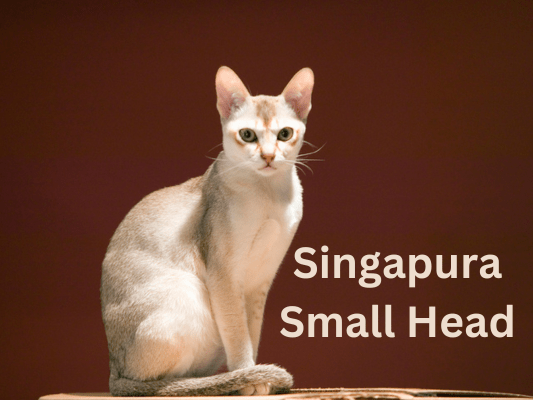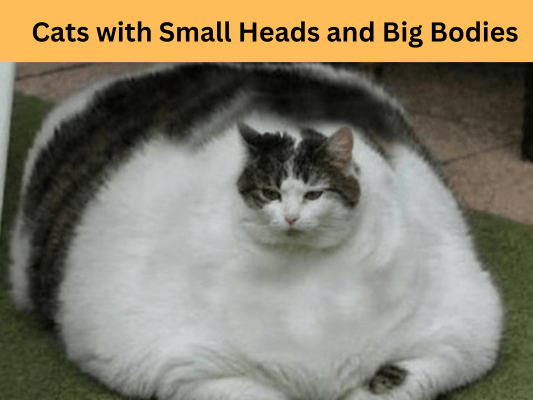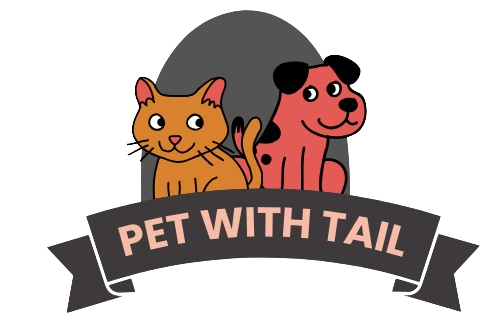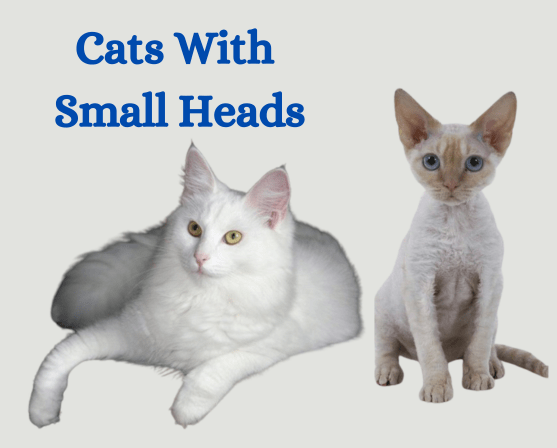Some cats exhibit a peculiar feature: they have small heads compared to their bodies. While this trait might appear unusual, rest assured that it does not negatively impact the cat’s health or personality.
In this blog post, we’ll talk about cats with small heads, why certain felines have disproportionately small heads, how to care for them properly, and essential considerations before adopting a petite-headed cat.
Contents
What Causes Small Heads in Cats?
1. Dwarfism
One of the most common reasons for a small cat head is dwarfism, a genetic condition resulting in an overall smaller body size. The technical term for this is hypochondroplasia. Dwarf cats may have limitations in their jumping ability, but they can still lead long and healthy lives.
2. Kittenhood
It’s entirely normal for kittens to have heads that appear too small for their bodies. As these kittens mature into adult cats, their head and body proportions gradually even out.
3. Breed Characteristics
Certain cat breeds, such as Persians and Exotic Shorthairs, are known for their rounded, snub noses. These brachycephalic (short-muzzled) breeds tend to have small heads, which contribute to their unique appearance.
Caring for Cats With Small Heads
Caring for small-headed cats is similar to caring for typical felines. Here are some essential tips:
- Nutritious Diet: Provide a diet formulated for kittens or small breeds.
- Limit Jump Heights: Use ramps and low furniture to prevent excessive jumping.
- Safe Walks: Consider using a cat harness for outdoor walks.
- Dental Health: Monitor dental health carefully.
- Weight Management: Prevent them from becoming overweight.
Remember that the size of their heads doesn’t affect their personality, and cats with small heads can live long, affectionate lives.
Health Considerations
While small-headed cats are generally healthy, there are a few health considerations:
- Dwarfism and Brachycephaly: These conditions are linked to dental issues, breathing problems, and joint problems.
- Lifespan: On average, small-headed breeds have shorter lifespans (10-15 years) compared to larger cats (12-20 years).
- Grooming: Brachycephalic cats require daily grooming to prevent matting and keep their facial folds clean.
Finding the Right Small-Headed Cat
If you’re interested in adopting a cat with a petite head, consider the following options:
- Reputable Breeders: Look for breeders specializing in breeds like Munchkins, Singapuras, and Persians.
- Animal Shelters and Rescues: Check local shelters for mixed-breed cats with naturally small heads.
- Pet Adoption Sites: Search adoption sites, prioritizing non-profits over individuals.
Remember, each small-headed cat has its unique charm, and with proper care and regular vet visits, they can be wonderful companions. 🐾
Cats Breeds with Small Heads and Big Bodies
Cats come in all shapes and sizes, and one fascinating yet often overlooked difference lies in the size of their heads. Some breeds exhibit small heads despite having large bodies. Let’s explore these unique feline companions:
1- Devon Rex:
- The Devon Rex boasts a small head with distinctively large eyes.
- Their long, sturdy legs give them an appearance of grandeur.
- Unusually large toes add to their quirky charm.
- Described as a blend of dog, monkey, and cat, they can even learn tricks like fetching.
2- Ragdoll:
- Developed in the 1960s by Ann Baker, Ragdolls have a large, muscular form.
- Their broad heads, marked by a flat top, pale in comparison to their sturdy bodies and thick coats.
- Females weigh 8-15 pounds, while males can reach 12-20 pounds.
3- American Bobtail:
- These cats have naturally bobbed tails and relatively small heads.
- Sturdy and adaptable, they bond easily with family members.
- Their shaggy coats set them apart from other breeds.
4- Persian Cats:
- Known for their short muzzles and round faces.
- The combination of a tiny head, long luxurious fur, and a pretty face makes them the glamour kitties of the cat world.
- Whether traditional or show Persians, they’re perfect lap cats.
5- American Curl:
- Named after their unique ears that curl backward.
- Born with straight ears, they begin to curl within 48 hours.
- Agile, intelligent, and friendly, they make delightful companions.
Remember, each of these cats brings its charm, proving that big personalities can reside in small-headed bodies! 🐾
When it comes to feline companions, size doesn’t always matter. Some of the most delightful and adorable cats are the ones with petite proportions. Let’s explore the world of small cat breeds, their unique features, and why they’ve left a big impression on cat lovers worldwide.
6- Singapura
!Singapura The Singapura is generally regarded as the smallest cat breed. Originating from Singapore, this tiny cat matures to a weight of 4 to 8 pounds. Despite its diminutive size, the Singapura has a surprisingly muscular body and captivating eyes. Here are the key details:

- Height: 6 to 8 inches
- Weight: 4 to 8 pounds
- Physical attributes include a rounded head, big eyes, and a petite but strong build.
7- Munchkin
!Munchkin The Munchkin holds the title of being the shortest cat breed in the world. These cats have a naturally occurring genetic mutation that results in shorter legs, giving them a low stature of 7 to 9 inches at the shoulder. Notably, the shortest adult cat on record was a munchkin named Lilieput, measuring a mere 5.25 inches tall in 2013. Here are the details:
- Height: 7 to 9 inches
- Weight: 6 to 9 pounds
- Physical attributes include a round face, short or long hair, an average body length, and small legs.
8- Cornish Rex
!Cornish Rex The Cornish Rex may appear larger due to its long legs and angular features, but it’s a small cat breed. Known for its unique coat, this breed stands out. Here’s what you need to know:
- Height: Varies, but generally small
- Weight: Typically under 10 pounds
- Physical Characteristics: Curly coat, large ears, and an elegant appearance.
Suggested: Cat Big Head
How To Care for Your Cross-Eyed Ragdoll Cat
Why Is My Kitten’s Head So Small?
Kittens, like human babies, go through various stages of development. If you’ve noticed that your kitten’s head seems smaller than expected, here are some possible reasons:
- Normal Growth: Kittens have proportionally larger eyes and heads compared to their bodies. As they grow, their body catches up, and the head-to-body ratio becomes more balanced.
- Genetics: Just like people, cats inherit traits from their parents. If your kitten’s parents had smaller heads, it’s possible that your kitten inherited this feature.
- Dwarfism: Rarely, kittens may have a genetic condition called dwarfism, which affects overall body size, including head size. However, this is relatively uncommon.
- Nutrition: Proper nutrition during kittenhood is crucial for healthy growth. If your kitten didn’t receive adequate nutrition, it might impact overall development, including head size.
Remember to monitor your kitten’s growth, provide a balanced diet, and consult your veterinarian if you have concerns about their development.
Cats with Small Heads and Big Bodies
Some cats defy the usual proportions, and you might come across felines with small heads and large bodies. Here’s what you need to know:
- Brachycephalic Breeds: Certain cat breeds, such as Persians, Exotic Shorthairs, and British Shorthairs, have round faces and shorter muzzles. Their small heads contribute to their unique appearance.
- Health Considerations: Brachycephalic cats may face breathing difficulties, dental issues, and heat sensitivity due to their facial structure. Regular veterinary check-ups are essential.
- Weight Management: Large-bodied cats need proper weight management to prevent health problems. Ensure they stay active and maintain a healthy weight.
Remember, each cat is an individual, and their proportions can vary. Love them for their uniqueness!

Do Female Cats Have Smaller Heads?
Yes, female cats generally have slightly smaller heads compared to male cats. However, the difference is usually subtle and not significant. Factors like genetics, breed, and overall body size play a role. Female cats are equally intelligent, playful, and loving, regardless of head size!
What Is SMOL Cat?
SMOL Cat is an endearing term used to describe cats with petite features. These felines often have small heads, short legs, and compact bodies. Whether it’s a Singapura, a Munchkin, or any other small cat breed, SMOL cats bring immense joy to their human companions. Embrace their tininess and revel in their big personalities! 🐾
Conclusion
Cats with small heads breeds bring joy, playfulness, and charm into our lives. Whether you’re drawn to the Singapura’s doe eyes, the Munchkin’s adorable short legs, or the Cornish Rex’s elegant coat, these petite felines prove that good things come in small packages.
In our journey through the feline world, we’ve explored the delightful realm of cats with small heads. These petite purring machines may defy conventional proportions, but their impact on our hearts is immeasurable.
- Singapura: The tiniest of them all, the Singapura, with its captivating eyes and muscular body, proves that good things come in small packages.
- Munchkin: The munchkin’s short legs and adorable stature make it the shortest cat breed globally. Lilieput, the record-holder, stood at just 5.25 inches tall!
- Cornish Rex: Despite their long legs, Cornish Rex cats are small in overall size. Their unique curly coat and elegant appearance set them apart.
Remember, whether it’s a brachycephalic Persian, a playful Munchkin, or a sleek Cornish Rex, each small-headed cat brings joy, companionship, and a touch of whimsy to our lives. Embrace their uniqueness, care for them diligently, and let their big personalities shine through. 🐾




